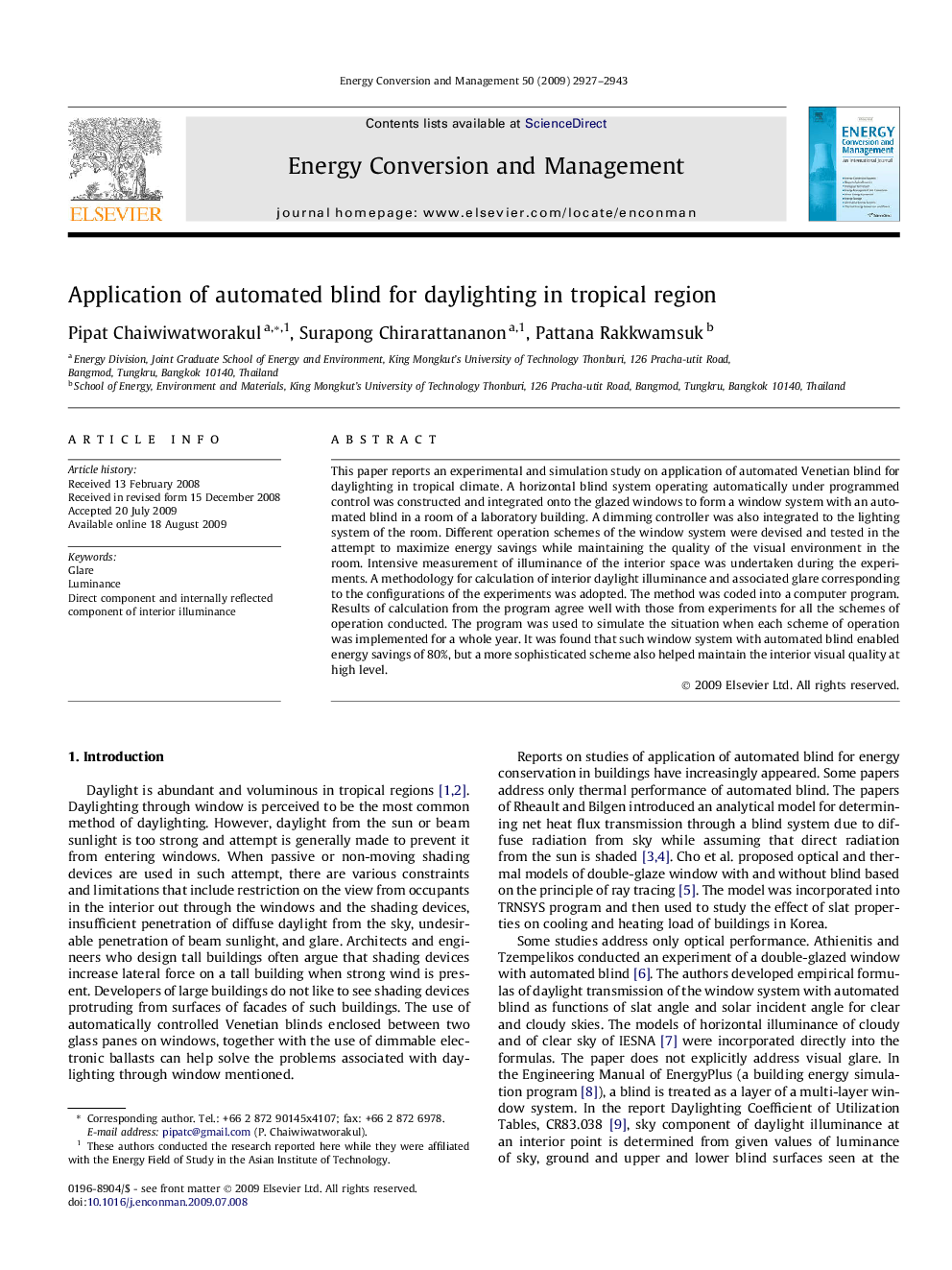| Article ID | Journal | Published Year | Pages | File Type |
|---|---|---|---|---|
| 761698 | Energy Conversion and Management | 2009 | 17 Pages |
This paper reports an experimental and simulation study on application of automated Venetian blind for daylighting in tropical climate. A horizontal blind system operating automatically under programmed control was constructed and integrated onto the glazed windows to form a window system with an automated blind in a room of a laboratory building. A dimming controller was also integrated to the lighting system of the room. Different operation schemes of the window system were devised and tested in the attempt to maximize energy savings while maintaining the quality of the visual environment in the room. Intensive measurement of illuminance of the interior space was undertaken during the experiments. A methodology for calculation of interior daylight illuminance and associated glare corresponding to the configurations of the experiments was adopted. The method was coded into a computer program. Results of calculation from the program agree well with those from experiments for all the schemes of operation conducted. The program was used to simulate the situation when each scheme of operation was implemented for a whole year. It was found that such window system with automated blind enabled energy savings of 80%, but a more sophisticated scheme also helped maintain the interior visual quality at high level.
